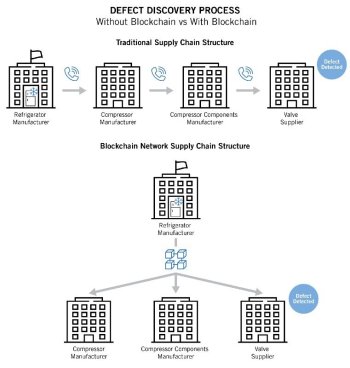K
Kathleen Martin
Guest
Blockchain has been heralded as a cutting-edge technology that will improve the contemporary supply chain structure by increasing supply chain trust, efficiency, and transparency. However, as promising as blockchain technology is, blockchain is not a panacea for supply chain issues. There are numerous pros and cons of using blockchain in the supply chain:


- Trust. Because data on the blockchain is decentralized and immutable, members of the supply chain can trust the data they see on the blockchain. Conversely, a traditional supply chain data storage structure typically requires all members of the supply chain to keep their own records, and therefore disputes arise when those records do not match up.
- Efficiency. Because all data is recorded at every step in the supply chain, and every member of the supply chain can see the data, it is easy to quickly identify where in the supply chain a nonconformance (e.g., a product defect or missing product quantity) has occurred, because the life cycle of a product is tracked at every step. Let’s take, for example, the construction of a refrigerator. In the case of a traditional supply chain structure, if the refrigerator manufacturer discovers that the compressor of a finished refrigerator contains a defective valve, the refrigerator manufacturer will then need to reach out to the compressor manufacturer, who will need to reach out to the manufacturer of compressor components, and so on and so forth, up the supplier tiers until the supplier of the defective valve is reached. In contrast, if all members of the refrigerator supply chain were members of the same blockchain network, the refrigerator manufacturer would be able to query the blockchain to find the entire tracing history of the defective valve almost instantaneously, cutting investigation time down considerably. Using blockchain technology allows for less time lost sending emails and making phone calls to find out the cause of the nonconformance. Additionally, because documents are stored on a shared ledger, physical paperwork is largely unnecessary.
- Transparency. Blockchain engenders transparency because all data on the blockchain is recorded automatically with a time stamp, including certain data that usually would not be recorded in a traditional supply chain system (such as the steps completed in a production process or the time of a seller’s receipt of a purchase order). Blockchain technology also creates transparency by enabling end-to-end tracking (i.e., traceability from one end of the supply chain to the other), which can be enjoyed by all supply chain members on the blockchain. Blockchain transparency can accomplish quicker resolutions to disputes than with traditional supply chain systems.

